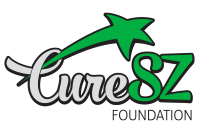
Dr. Craig Chepke, Membro, Conselho de Administração, Fundação CURESZ, Psiquiatra de Prática Privada e Professor Assistente Adjunto de Psiquiatria, Faculdade de Medicina da Universidade da Carolina do Norte
Meu última coluna discutiram que a retirada do medicamento causador da Discinesia Tardia (DT) raramente resulta em remissão e, portanto, requer tratamento próprio e específico. No entanto, não havia tratamentos aprovados pela FDA antes de 2017. As poucas opções para as quais a Academia Americana de Neurologia (AAN) fez uma recomendação moderada apresentavam problemas significativos: o clonazepam tem um sério risco de dependência física e certos medicamentos de venda livre suplementos como ginkgo biloba foram descobertos pelo US Government Accountability Office como contendo muito menos do que a quantidade anunciada, ou mesmo nenhum.1
Worse yet, the medication that seems to have become the de facto standard-of-care in the United States for nearly all drug-induced movement disorders is benztropine (“Cogentin”). Not only does it carry a heavy side-effect burden, its use in TD has been categorized as “unsubstantiated” by the AAN because there have been no controlled clinical trials. Even the manufacturer’s official prescribing information says benztropine does not help TD and can aggravate its symptoms.2
Tetrabenazine, a medication from the 1950s, was not originally intended to treat TD but was found to have some benefit in other hyperkinetic movement disorders. Tetrabenazine inhibits a protein called VMAT2, which collects dopamine for release. People with TD have hypersensitive motor circuits, so inhibiting VMAT2 reduces the amount of dopamine released into those areas, alleviating some of the symptoms. Unfortunately, the active components of tetrabenazine are eliminated from the body so quickly, it must be taken three times a day and leads to greater side effects, which limited its use.
In 2017, the FDA brought new hope to those suffering with TD by approving two highly effective medications to treat it. Both valbenazine and deutetrabenazine were derived from the tetrabenazine prototype but delivered improvements in side effects and convenience by slowing its metabolism – each with a different twist. Valbenazine slows elimination by elegantly attaching the amino acid valine to the component of tetrabenazine that is the most potent and selective. Deutetrabenazine slows the elimination by cleverly swapping eight of tetrabenazine’s hydrogen atoms for those of a close variant of hydrogen called deuterium.
Valbenazine and deutetrabenazine are both usually well-tolerated and have roughly similar benefits on average. Depending on the person, one may be more favorable than the other, and each has a different trade-off. Valbenazine has two once a day dosing options, both of which can be therapeutic. Deutetrabenazine has more potential dose options, but must be taken twice a day and requires titration over several weeks to the effective doses. VMAT2 inhibitors only treat the symptoms of TD and are not curative. If treatment with any of them is stopped, the symptoms return to their pre-treatment levels. Still, an increasing focus of psychiatric research involves circuits in the brain that use the neurotransmitter glutamate, which facilitates “synaptic plasticity,” essentially the brain’s ability to rewire itself. It will take much more investigation, but it is theoretically possible that future medications that modulate glutamate signaling could be found to help the brain remodel itself from the damage of TD.
Talvez o alvorecer da esperança para TD tenha apenas começado!
Referências:
1. https://www.gao.gov/assets/700/696047.pdf
2. Mesilato de benzotropina [bula], Lake Forest, IL: Akorn, Inc. 2016.

